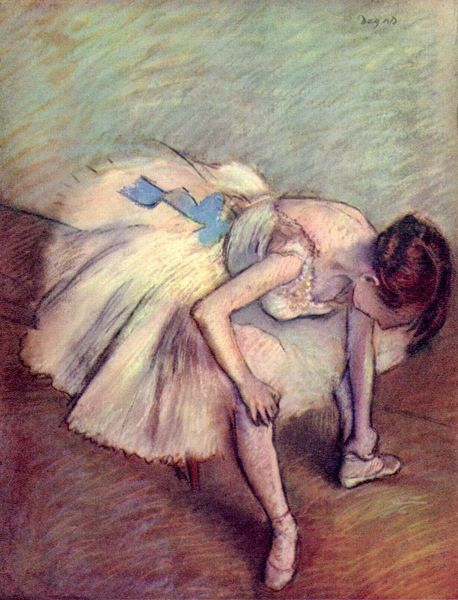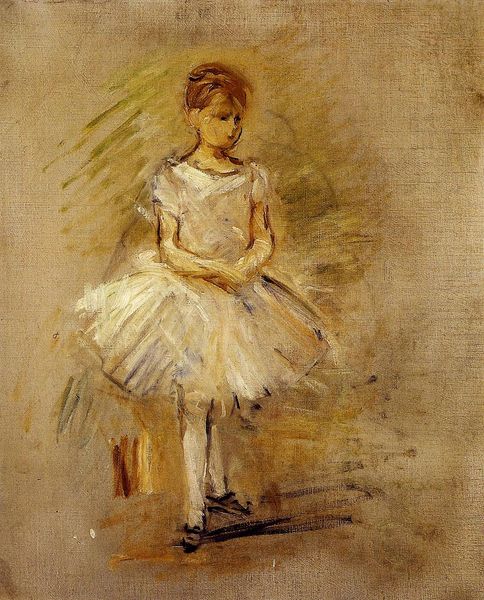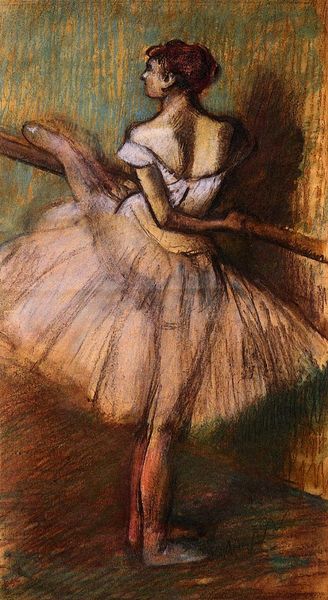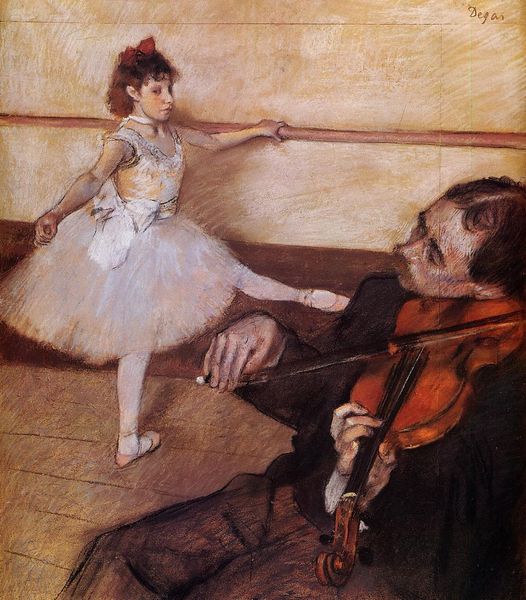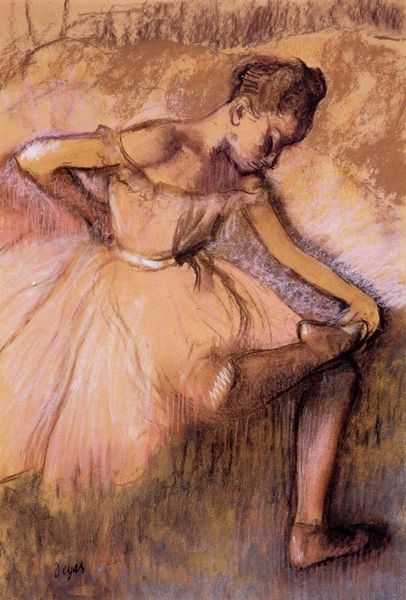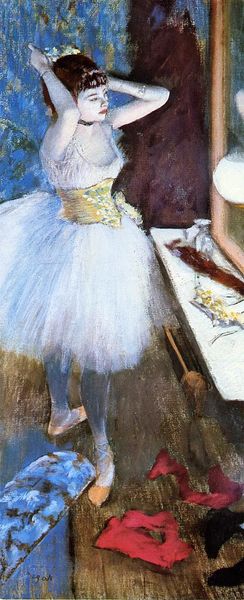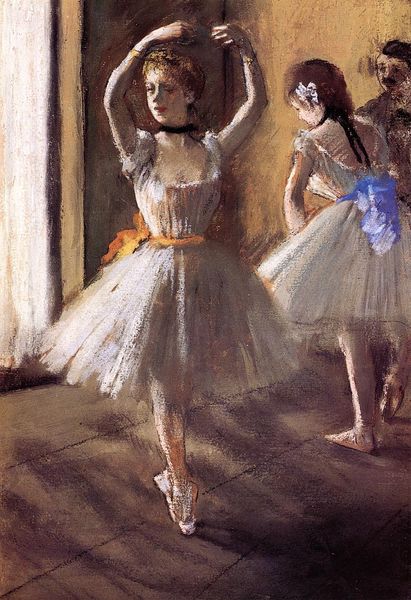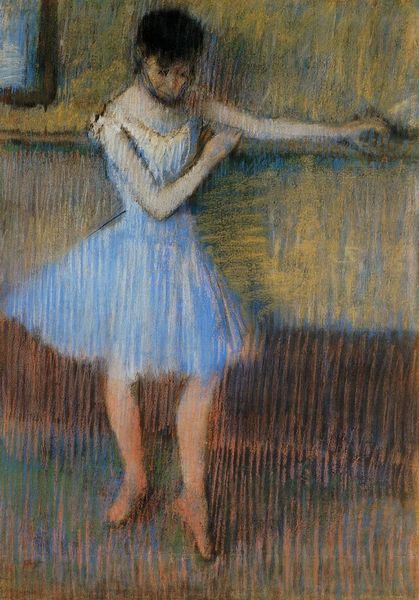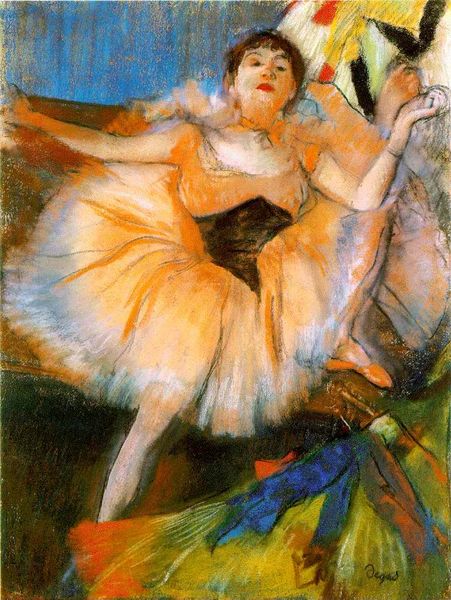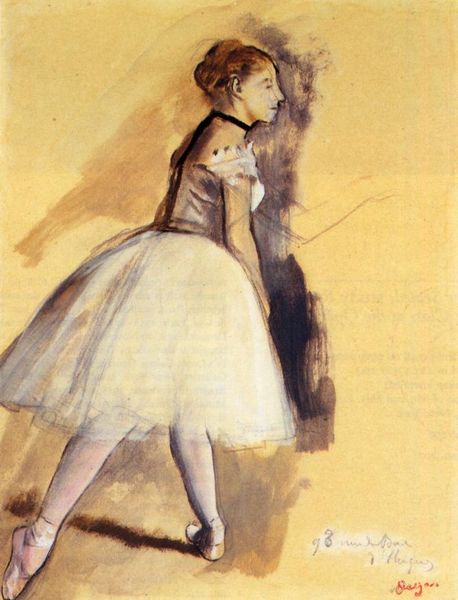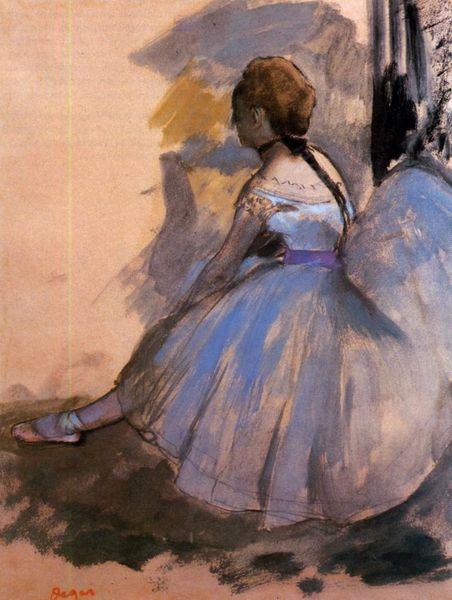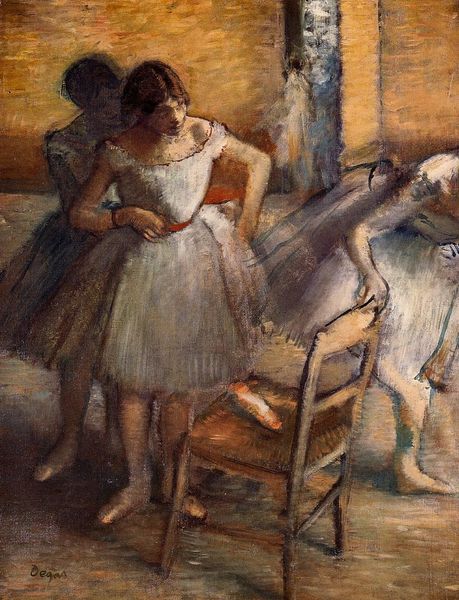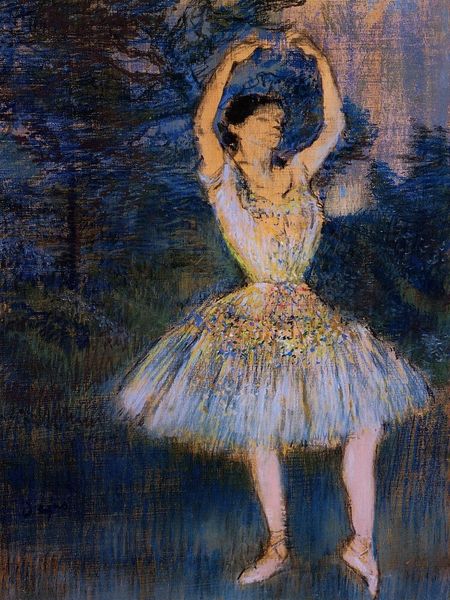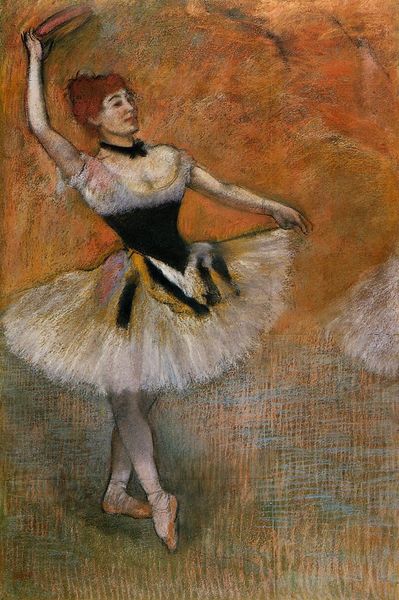
pastel
#
portrait
#
art-nouveau
#
impressionism
#
figuration
#
oil painting
#
genre-painting
#
pastel
#
portrait art
#
watercolor
Copyright: Public domain
Editor: Degas' "Dancer at the Barre," created around 1880 using pastel, has such a fleeting, dreamlike quality. I am really drawn to the posture of the dancer herself - what's your perspective on the visual symbols here? Curator: I see a layered portrait imbued with a pervasive melancholia. The ballet barre serves not only as a physical support, but also as a visual metaphor—a boundary both defining and confining her. It’s fascinating how the ballet, an emblem of ethereal grace and beauty, coexists with symbols of rigorous training, suggesting constraint. The gaze averted downwards tells of a hidden psychology—almost self-censorship and control. Have you considered the potential interplay between aspiration and confinement? Editor: That’s a very insightful interpretation. The lowered gaze definitely speaks of introspection. I hadn’t considered the barre itself as a symbol. It seems almost imprisoning. Do you see other layers of this symbolism throughout his works? Curator: Absolutely. Degas frequently employed dance as a lens for societal observation. Here, her tutu, while seemingly innocent, echoes back to the classical artistic symbol of drapery – often indicative of wealth, purity, and power. Do you notice the angle in the pastel, as it seems like he wants to deny the perfection, which creates visual tension. What's it communicating? Editor: I think the casual angle pushes away that notion of romantic perfection of ballet. It makes it real and even highlights labor instead. Curator: Precisely! His choices reveal a deep, subtle commentary on both the romantic idealization and the brutal reality. The dancer is bound by her commitment, confined to a practice – like women were bound by roles. The pastel almost captures the symbol for a transitional experience for the ballet dancer. Editor: That tension between the dream and the hard work involved gives the work so much emotional depth. This has totally reframed how I view not just this work, but ballet imagery in general! Curator: And perhaps illuminated how symbols evolve yet continue to resonate throughout art history, subtly shaping our perceptions of women, and the pursuit of ideals, isn’t it?
Comments
No comments
Be the first to comment and join the conversation on the ultimate creative platform.
